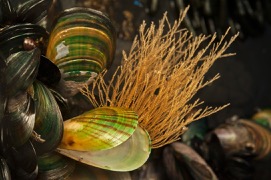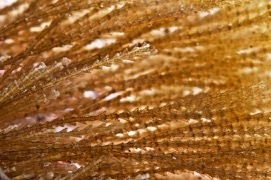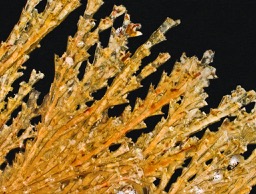Hydroid, Mussel's Beard
Amphisbetia sp.
Kumikumi
Invertebrate
Cnidaria
Hydrozoa
Sertulariidae

Predator

World Wide

Inedible

Microscopic
These animals look rather like seaweed attached to mussels. On close inspection with a hand lens, however, they can be seen to be colonies of small animals in a chitinous skeleton.
They are most often found attached to the green lipped mussel, but can also be found attached to other hard surfaces on the low intertidal to shallow subtidal.
They use their stining cells (nematocysts or cnidae) to capture plankton .
They have a 2 stage life cycle. They spend most of their lives as colonies of polyps which grow by asexual budding, but sometimes these will produce a jellyfish like medusa, which can reproduce sexually producing eggs and sperm, which leads to a planktonic larva. This larva will close the circle by settling onto a hard surface and transforming into a new colony of polyps.
Photo Credit: Rod Morris. Photos can be purchased from https://www.rodmorris.co.nz/


